How Smart eCommerce Brands Are Turning Stored Stock into Strategic Capital for Q4
“For years, we saw inventory as a burden. Then we realised: it was our most overlooked growth lever.” — UK DTC Founder, Consumer Tech Brand
TL;DR Snapshot
- Inventory costs 20–30% annually just to hold
- 40% of lost sales happen because of stockouts
- Brands are unlocking 70–90% of their inventory’s value instantly
- Inventory-backed funding helps smart brands invest early in Q4 stock, campaigns, and growth
Late July: The Calm Before the Q4 Storm
It was late July, the lull after Prime Day. Sales had spiked, inventory had moved—but now, the warehouse felt different. Less inventory, less cash, and less certainty about the upcoming Q4.
For one UK homeware founder, the quiet was unsettling. He paced among the remaining boxes, mentally calculating deposits, freight deadlines, and ad spend. He knew too well what would happen next: supplier slots would disappear overnight, freight prices would surge, and campaign CPMs would jump just when he needed to scale. The inventory around him felt like frozen cash, an asset that had suddenly become a liability.
"We were profitable," he said. "But Q4 was approaching fast—and our inventory had tied up nearly all our capital. Something had to change."
Then, a thought struck him clearly:
What if inventory wasn’t the barrier to growth—but exactly the fuel he needed to scale?
Inventory Isn’t an Expense. It’s Capital Waiting to Move.
Most eCommerce brands still think of inventory as a sunk cost.
You pay upfront. You store it. You hope it sells eventually.
But smart retailers see it differently: Inventory is an uncashed cheque.
If your stock is stuck on the shelf, it’s not frozen cash—it’s latent capital ready to be activated.
Consider this surprising reality:
Every £1 tied up in unsold inventory can quietly cost you £1.30 by Q4, thanks to inflation, carrying costs, and lost growth opportunities.
If you’re preparing for Q4, ask yourself one crucial question:
What if inventory isn’t dead weight—but your Q4 growth fund waiting to happen?
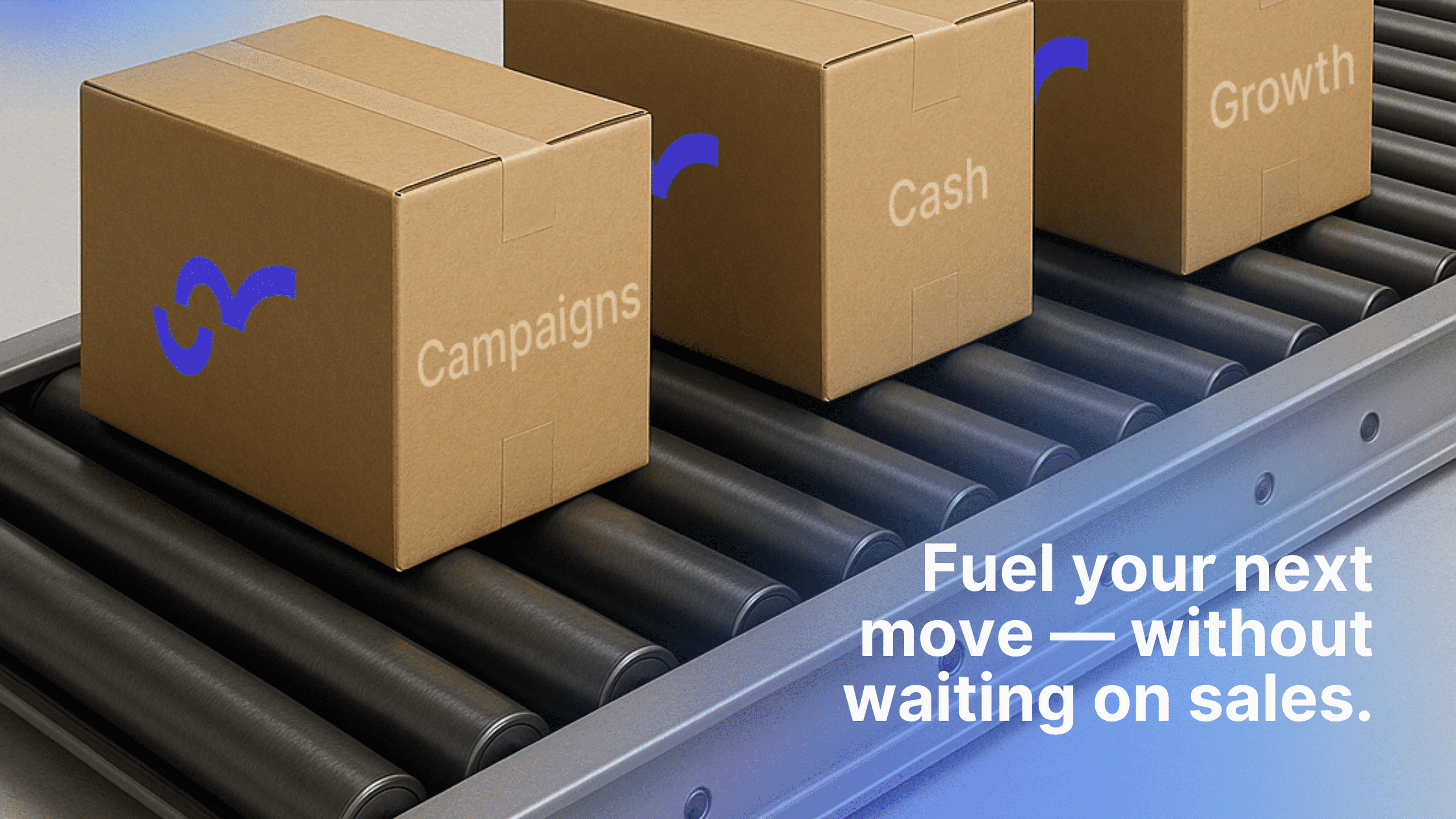
The Quiet Cost of Inventory Anxiety
“Every stockout didn’t just cost us sales—it cost me sleep. Every unsold box wasn’t just inventory—it was anxiety.” — UK Founder, Homeware Brand
The stress of inventory mismanagement is real, costly, and often invisible.
Look at the numbers clearly:
- 📦 20–30% annual carrying cost (storage, insurance, depreciation) [deltafulfilment.co.uk]
- 🛒 40% of retail’s lost sales come directly from stockouts [firework.com]
This anxiety isn’t imaginary. It slows your momentum, thins your margins, and quietly erodes your brand.

Real-World Impact: How One Brand Unlocked Q4 Growth Early
In July 2025, a UK supplements brand hit a familiar wall.
£150k tied up in inventory — with Q4 supplier deposits looming
They unlocked capital using their existing inventory. And within weeks, saw immediate impact:
- 💸 Released £150,000 (70% of inventory value)
- 🤝 Secured £22,500 in supplier discounts by paying early
- 📈 Boosted ad spend by 30%, driving a 19% Month-on-Month lift in sales
- 🔁 Avoided stockouts entirely — protecting customer trust
They didn’t raise capital. They released it.
Instead of inventory holding them back, it became the cornerstone of their Q4 strategy—no dilution, no delays, just well-timed growth.

The Inventory Leverage Flywheel
Smart retailers now treat inventory as a fundable asset.
Here’s how the flywheel works:
Fund Early
Unlock 70–90% of your inventory value using live fulfilment data.
Scale Quickly
Reorder ahead, secure supplier discounts, or increase campaign spend.
Reinvest Strategically
Drive sales, reduce per-unit costs, and improve margins.
Repeat
Each cycle builds financial resilience and unlocks faster growth.
🧠 Your warehouse becomes a growth engine — not a holding pen.

Run Your Inventory Leverage Audit
Want to know if your inventory is underutilised? Start here:
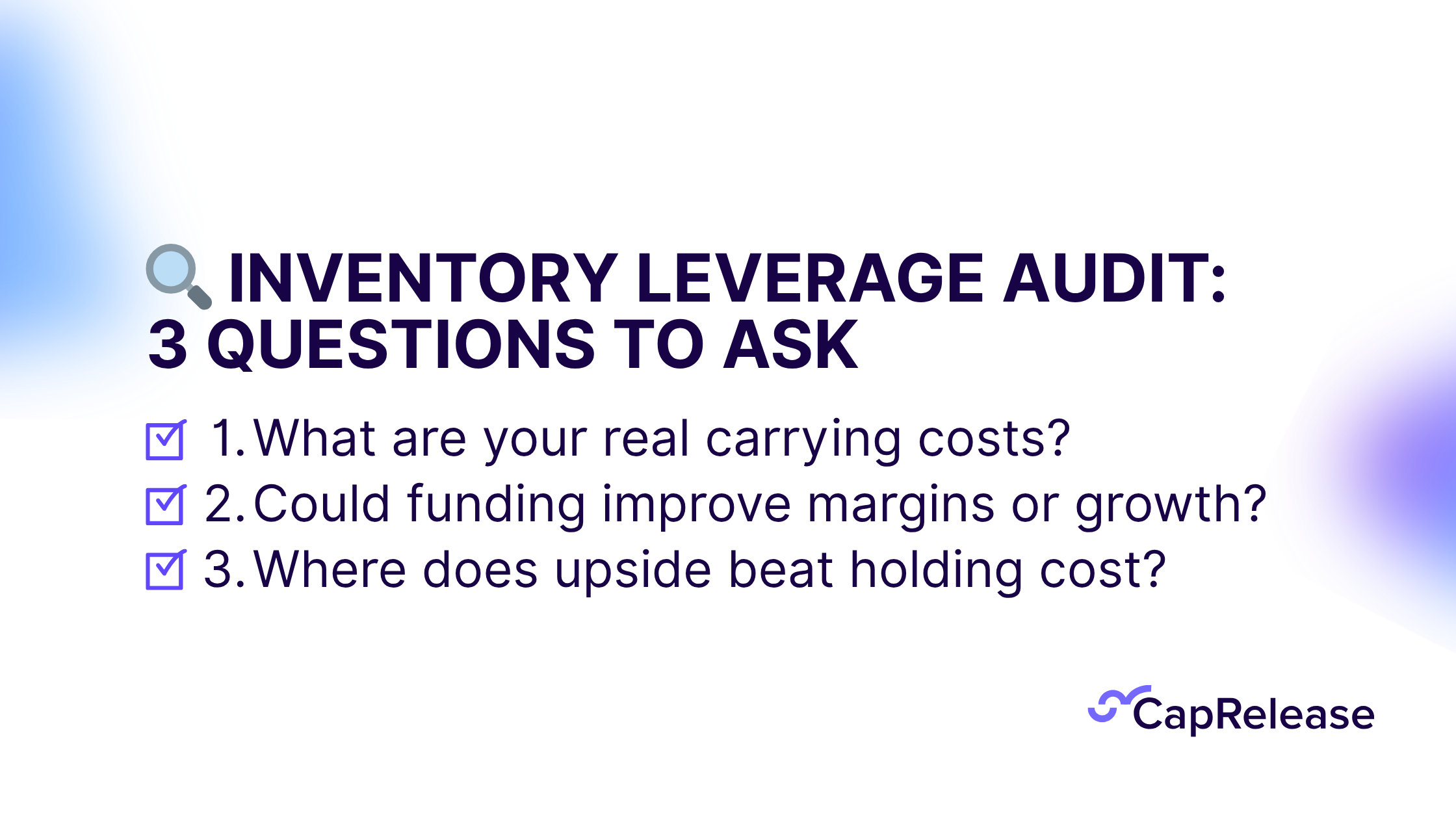
The Hidden Risk of Waiting Too Long
Doing nothing in July rarely looks risky on the surface. But quietly, these problems build up behind the scenes:
- Suppliers tighten availability and raise prices.
- Freight becomes scarce—and expensive.
- Ad costs spike when you’re finally ready to spend.
- Inventory gaps emerge, weakening Q4 sales and customer retention.
You won’t collapse overnight, but your growth edge quietly dulls.
FAQs for Q4 Inventory-Backed Funding
What exactly is inventory-backed funding?
It’s capital unlocked directly from inventory you’ve already paid for, allowing fast, flexible growth without dilution.
How much can we unlock from our inventory?
Typically between 70–90% of current inventory value, depending on your fulfilment data, sell-through rates, and seasonality.
What kind of inventory qualifies?
Most consumer goods stored with UK-based fulfilment, especially those with proven demand and steady sell-through.
Turn Your Stored Inventory into Q4 Growth Capital Now
You’ve already paid for your inventory—now let it pay you back.
CapRelease unlocks the value of your inventory fast, flexible, and without dilution—built for how you operate and grow:
✅ Reorder inventory faster
✅ Lock in lower supplier prices and freight costs
✅ Scale your Q4 campaigns confidently
✅ Repay only when you earn
Your next move is clear. The real question is:
Will your funding land in time for Q4—or after?
👉 Check your eligibility in 2 minutes → or 📞 Book a call to discuss your Q4 funding options
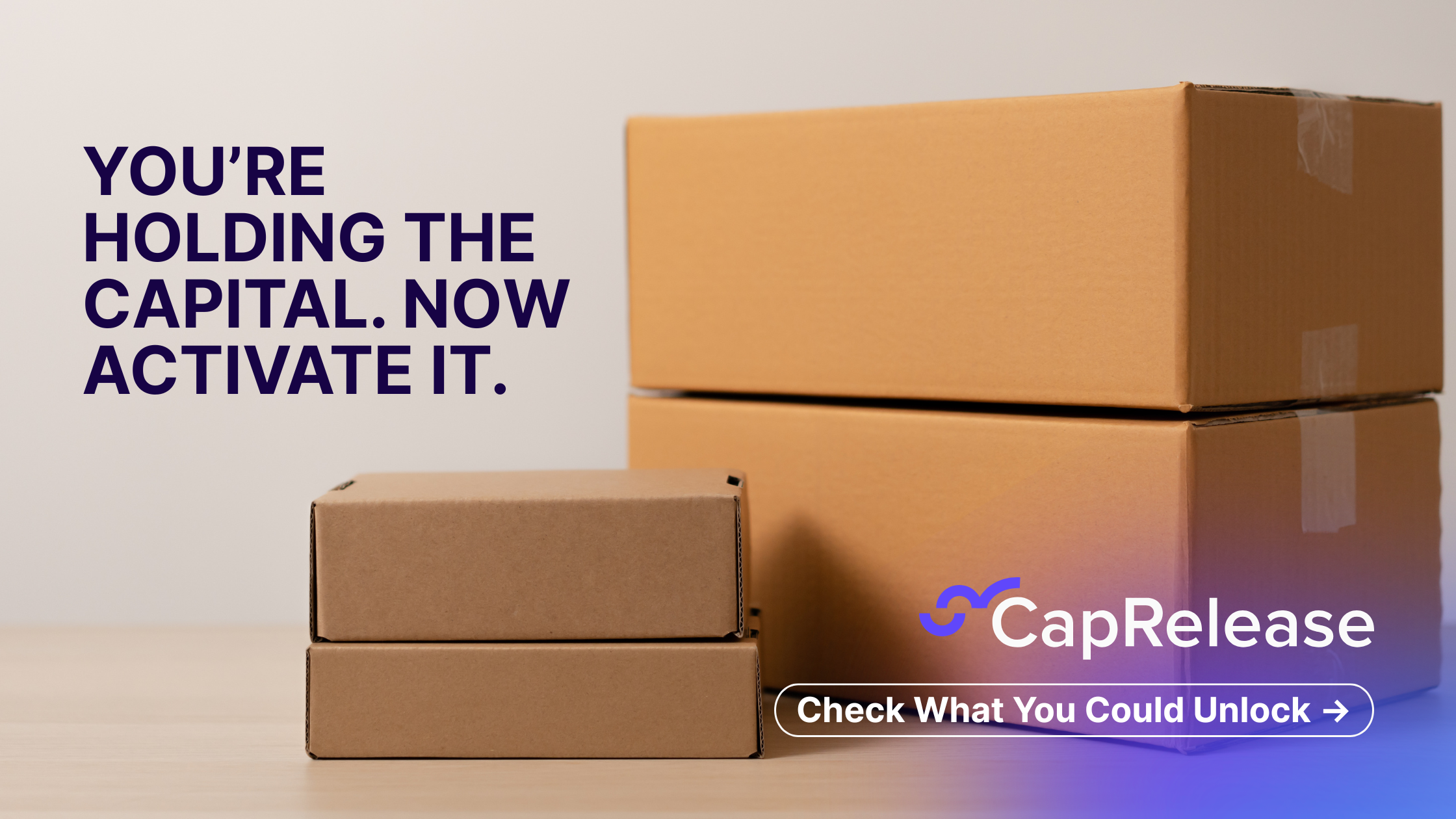
Related posts
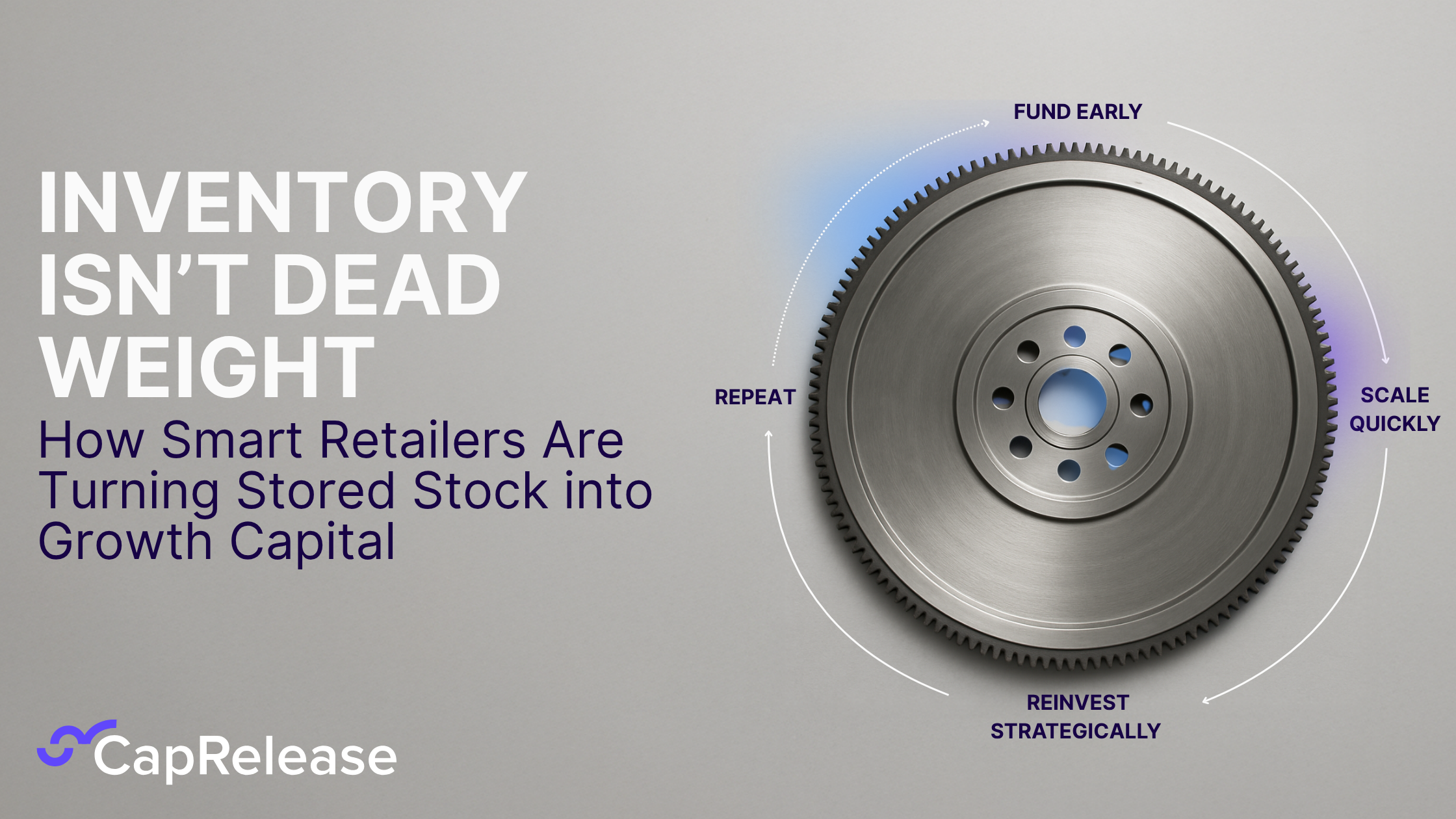
Inventory Isn’t Dead Weight
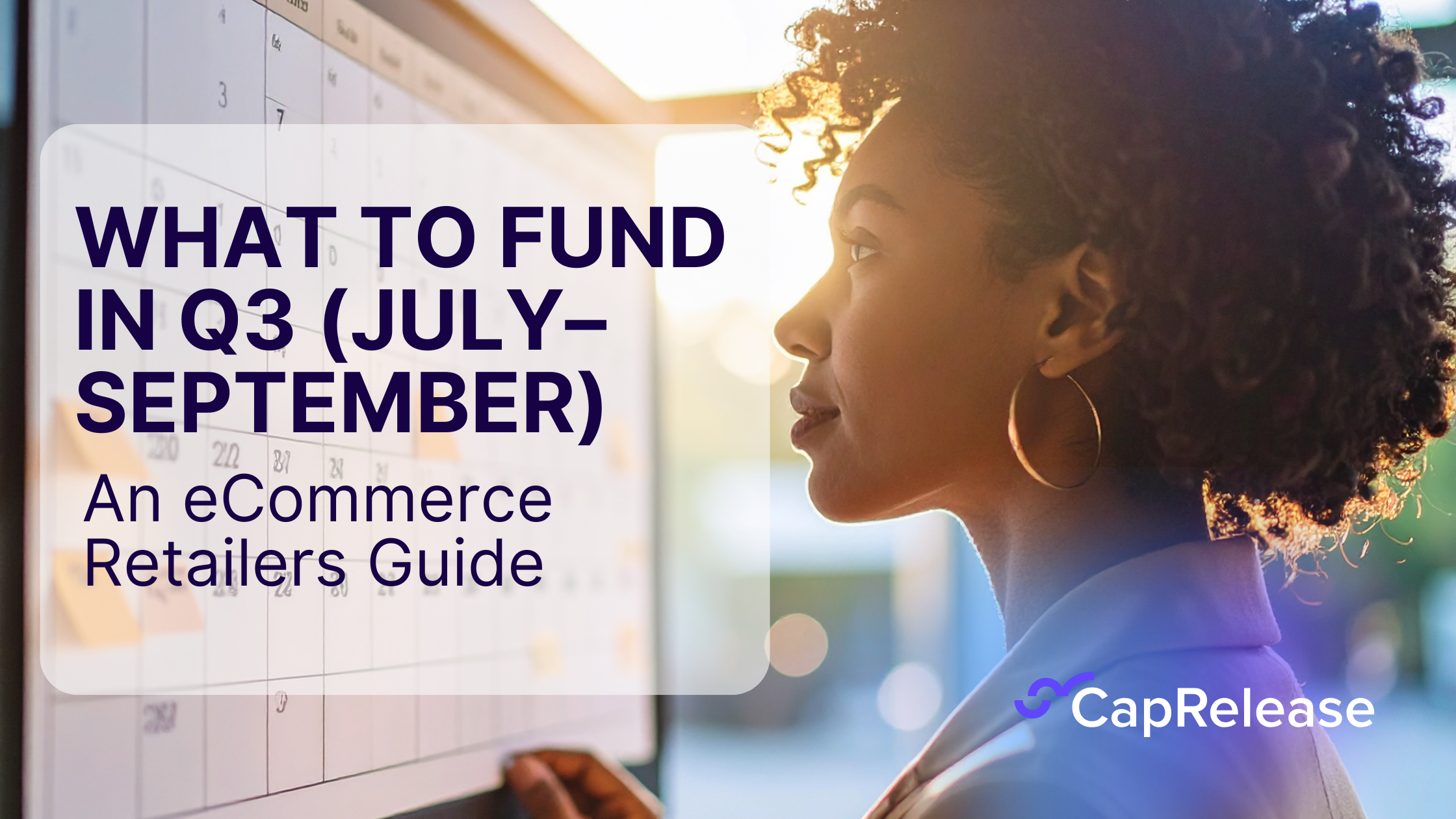
💸 What to Fund in Q3 — And When to Act

